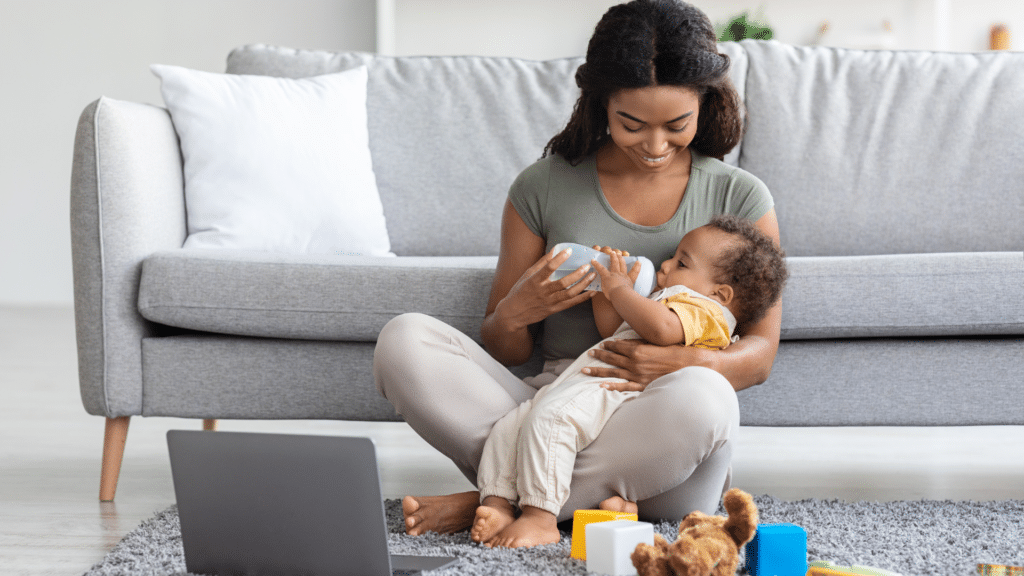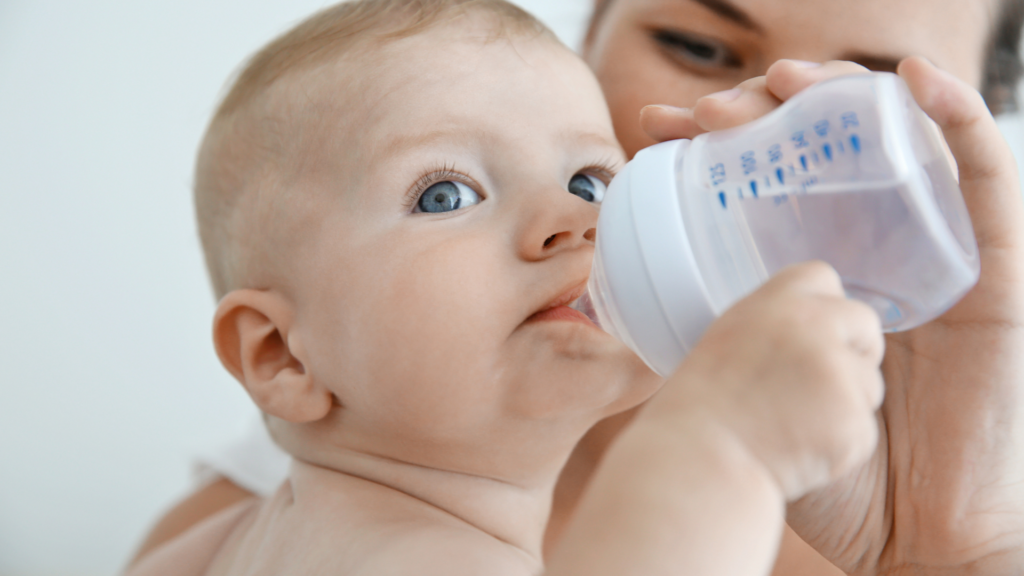Whether you’ve already introduced a pacifier to your baby’s routine or are considering the possibility, remember that effective hygiene and safety practices can ensure your baby gets the comfort they seek without compromising on health. Regular cleaning, inspection, and replacement of the pacifier, along with safe storage practices, are key steps in pacifier maintenance. Learning to address common pacifier problems promptly and understanding pacifier safety tips can also greatly help in your parenting journey.
Consider the benefits of alternatives to pacifiers and ready yourself for the eventual weaning process. After all, each child is unique, and the best care always revolves around understanding and catering to their individual needs. With this guide, you are now equipped with the knowledge to properly maintain your baby’s pacifier, keep them safe, and support their overall health and happiness.

Understanding Pacifiers
Pacifiers, often known as “soothers,” “binkies,” “dummies,” or a myriad of other names, are often used to calm infants. They can be a helpful tool for creating a safe infant sleeping environment, appeasing a fussy baby or aiding in infant sleep. Benefits of pacifier use include pain relief or analgesic effects and, notably, a reduction in the risk of sudden infant death syndrome (SIDS). For preterm infants, infant pacifiers have been linked to shorter hospital stays.
While comforting, they are not without potential drawbacks. Infant pacifiers usage from six months of age onwards has been associated with an increase in ear infections and fluid buildup in the ears. Over time, this could lead to more serious health concerns.
A phenomenon known as the “pacifier fairy” has been popularized as a method of weaning children off pacifiers, by having the “pacifier fairy” come to take away the child’s pacifiers and presumably give them to babies who need them.
When deciding whether to introduce a pacifier into your child’s routine, it’s important to weigh these pros and cons and consult with a healthcare professional.
Remember, like many aspects of childcare, the use of pacifiers is ultimately a personal decision. The benefits for one baby might not hold true for another, and what works best for your family and your baby’s unique needs is the most important factor to consider.
Why Proper Maintenance Matters
Proper maintenance of any equipment, machinery, or systems, be it in households, vehicles, or industries, matters for several reasons. These reasons collectively contribute to why proper maintenance is essential in our daily lives and work.
Pacifier clips simplify the process of keeping baby pacifiers near your child, preventing them from falling on the floor and making it easier to locate when needed. Proper maintenance of pacifier clips and baby pacifiers are crucial for ensuring the safety and health of your child.
Ensures Safety
Proper maintenance ensures safety. Machines and equipment that are not properly maintained can become unsafe. They may have faulty wiring or unstable parts that could potentially cause accidents. In the context of baby pacifiers, cleaning them regularly and ensuring they are free of damage can prevent hazards such as choking.
Increases Efficiency
Properly maintained equipment operates at its best performance. Maintenance activities such as tuning, cleaning, repairing, or replacing parts can significantly improve the efficiency of equipment and save energy that would otherwise be lost due to operational inefficiency. Ensuring baby pacifiers are clean and intact also ensures they function effectively as a soothing device for infants.
Prolongs Lifespan
Maintenance extends the life of the equipment. Regularly serviced equipment is less likely to undergo serious breakdowns that could shorten the device’s lifespan. The same applies to baby pacifiers – regular inspection and cleaning prolong their usability.

Reduces Costs
Although maintenance requires some expenses, these expenses can actually save money in the long run. Regular preventative maintenance can reduce the need for expensive repair or replacement costs in the future. In the case of baby pacifiers, it is better to properly maintain than to continuously replace them.
Reduces Downtime
Especially in industrial settings, downtime can cause enormous losses. Having an effective maintenance plan can reduce the chances of unexpected breakdowns that would cause downtime. Proper maintenance of baby pacifiers ensures they are readily available when needed, preventing frustration for both babies and their caregivers.
Ensures Compliance with Regulations
Certain safety and operational regulations mandate regular maintenance of certain types of equipment. This maintenance helps to ensure compliance with these regulations and avoid legal penalties. In the field of behavioral sleep medicine, proper maintenance and cleaning of baby pacifiers contribute to reducing the risk of sleep-related infant deaths and promote a healthier sleeping environment for infants.
Step-by-Step Guide to Effective Pacifier Maintenance
As any devoted parent knows, maintaining your child’s pacifier is an important task that not only ensures your child’s comfort but, more significantly, their health. This guide will walk you through the best practices for effective pacifier maintenance.
To start, implementing regular daily cleaning routines is vital. To keep your infant’s pacifier sanitary, wash it daily with warm, soapy water. Be careful to rinse it thoroughly to avoid residual soap that could harm your baby’s mouth. Supplementary to washing, frequent sterilization is key. This can be done through boiling, using a dishwasher with a sterilization setting, or purchasing a baby product sterilizer. It’s also important to note that you should never clean a pacifier in your own mouth. This can transfer harmful bacteria to the infant, increasing the potential risk for illnesses, including middle ear infections.
In the situation where the pacifier falls on the ground, ensure to clean it immediately before giving it back to the baby. This will help to ensure the baby’s exposure to germs and dirt is minimized.
Additionally, weekly and monthly maintenance tasks will ensure the pacifier’s longevity. Regularly inspect for any signs of wear and tear, such as cracks, thinning, or coloring changes, which can be hidden reservoirs for germs or become a choking hazard. Replace pacifiers every one to two months or sooner if visible wear occurs. Remember, no pacifier is built to last forever, and your child’s safety should always be the priority.
For breastfeeding term infants, it is recommended to delay the introduction of a pacifier until breastfeeding is well established, usually around 3-4 weeks of age, to reduce potential nipple confusion and ensure a good breastfeeding latch and routine.
Some parents believe in the ‘pacifier fairy,’ a figure who is said to take pacifiers away from older children and give them to babies who need them. The “pacifier fairy” concept can be a helpful tool in the weaning process when the time comes for your child to give up their pacifier.

Last but not least, safe storage practices are integral to keeping the pacifier clean when not in use. Invest in a pacifier holder or case, and ensure it’s also kept clean. Never store a pacifier in a dirty diaper bag or loose in your purse. By following these guidelines, you can ensure a healthier infant sleep environment and keep your child’s pacifier in safe, working condition, providing them with the comfort they need.
Troubleshooting Pacifier Problems
Moving on to troubleshooting pacifier problems, every parent invariably faces a few common issues that require swift and informed responses.
The first issue to note is nipple damage. If you notice the nipple on the pacifier has become damaged, discard the pacifier immediately to prevent potential hazards. You should always have spare, clean pacifiers on hand to replace the damaged ones promptly to ensure both the safety and comfort of your child.
The second issue is pacifier refusal. If your child suddenly begins refusing the pacifier, don’t force it. Their need for a pacifier may decrease as they grow, or they might simply prefer a different type or brand. Experiment with different options to see if they accept a new one.
In addressing common concerns, patience and comprehension are key. Each child is unique, and it might take a while to find a solution that works. Always be receptive to your child’s individual needs and preferences.
Finally, here are some Pacifier Safety Tips.
- Choose a pacifier with a shield that’s larger than your child’s mouth to avoid the risk of choking.
- Ensure that the pacifier has ventilation holes in the shield to allow for air passage.
- Never tie a pacifier around your child’s neck or to their crib, as it presents a strangulation risk.
- Look for one-piece models with a soft nipple, as they are less likely to cause an injury and are safer overall.
By being alert and adhering to these guidelines, you can best oversee your infant’s usage of a pacifier, invariably helping to ensure their safety and happiness.
Enhancing Pacifier Use: Practical Tips and Tricks
While considering the practical applications of a pacifier and learning how to maintain it for your baby’s wellbeing is essential, an equally important and potentially beneficial section would be some additional tips and tricks to make the experience of using a pacifier much smoother for parents and their little ones.

1. Selecting the Right Pacifier
Choosing the right pacifier might seem simple, but it can significantly affect its success as a comforting tool for your little one. Nowadays, pacifiers come in numerous designs, shapes, and materials. Consider factors such as the age recommendation on the packaging, the nipple shape and material, whether the pacifier is a one-piece or multiple-piece design, and even the ease of grip for your baby before making your purchase. You may need to try several before finding one that your child prefers.
2. Different Pacifiers for Different Times
Consider keeping a few different types of pacifiers on hand. Your baby might prefer a certain type of pacifier for bedtime but another while they’re out and about. Having another style as a backup can also be helpful if one gets lost or damaged or if the child simply grows to prefer the alternative.
3. Linking Pacifier Use with Sleep Time
Using a pacifier only at sleep times can also teach your child to associate the soother with bedtime, effectively reinforcing a soothing bedtime routine. This can significantly ease your baby to sleep and help mitigate night-time crying sessions.
4. Introducing Early But Not Immediately
For parents who are breastfeeding, it’s essential to hold off on introducing a pacifier until the baby is breastfeeding well and the mother’s milk supply is established, usually by about 3-4 weeks after birth. However, beyond this point, don’t wait too long. If you wait several months to introduce the pacifier, your baby might not take it.
5. Pacifier Weaning Strategies
When it comes to weaning, it might be helpful to gradually decrease pacifier usage over time, rather than attempting to stop their use abruptly. This might involve restricting the pacifier to certain times or places, like during naps or in the crib, or progressively reducing the length of pacifier sessions.
6. Monitor Pacifier Habits
Monitoring your child’s pacifier habits can alert you to potential issues before they affect your child’s health. For example, if your child only uses the pacifier for sleep or when they’re upset, it’s likely an emotional comfort. If they’re using it continually throughout the day, they could be using it to quench thirst–potentially a sign of dehydration or diabetes.
7. Positive Reinforcement during Weaning
When weaning off the pacifier, offer your child rewards or use positive reinforcement, such as praising their “big kid” behavior. Ensure that you’re providing other forms of comfort in its place during these transition times, like additional snuggles and attention, to help ward off tantrums.
Incorporating these practical tips and tricks in your use of a pacifier can make an immense difference in your baby’s pacifier overall experience. These considerations amount to more than just proper pacifier maintenance but lead to the successful implementation and eventual weaning off of the pacifier, facilitating a well-rounded pacifier journey for both parents and babies alike.

Conclusion
In summary, maintaining your baby’s pacifier can be an essential step toward ensuring their comfort, health, and safety. From regular cleaning to inspecting for wear and tear and encouraging safe storage practices, each aspect of pacifier maintenance plays a vital role in your baby’s well-being. Furthermore, understanding potential pacifier issues and how to solve them, along with knowing some crucial safety rules, can empower you as a parent, helping you make informed decisions.
We must also keep in mind the importance of understanding the alternatives to pacifiers and preparing for the eventual process of weaning our children off them. Each child is unique, and perhaps the most crucial takeaway from this guide is to emphasize that the best care always revolves around understanding and catering to their individual needs.
As parents, our responsibility is to provide a safe and healthy environment for our little ones to grow. Remember, the journey of parenting is full of learning curves and uncertainties – but with the right knowledge and resources, you can navigate it with more confidence and less stress.
Did you find this article helpful? If so, please feel free to leave a comment below. If you have any questions or concerns, please don’t hesitate to ask.



